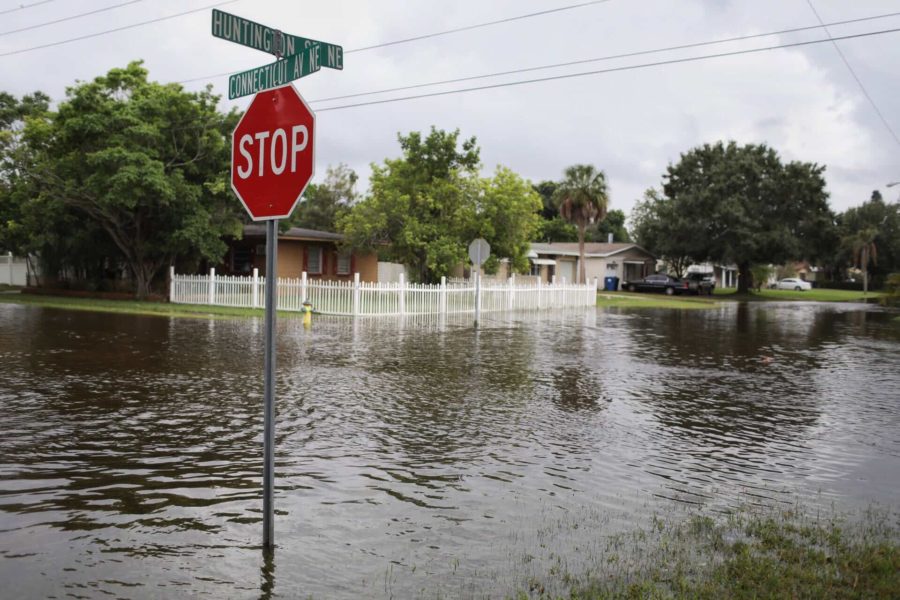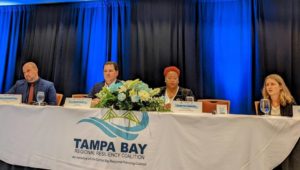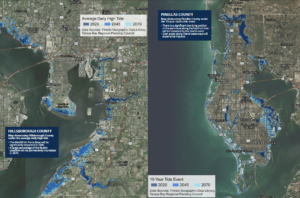Impact
Economic resiliency report: Spend $13 billion now or lose $81 billion later

Communities and corporations across the region must invest nearly $13.4 billion to protect the Tampa Bay area from financial ruin resulting from sea-level rise, stronger storms and more frequent flooding, according to Tuesday’s report by the Tampa Bay Partnership.
Underwritten by the JPMorgan Chase Foundation and produced in partnership with the Tampa Bay Regional Planning Council, the Tampa Bay Partnership released its detailed, 32-page report titled “Making the Economic Case for Resilience in Tampa Bay” at Tuesday’s Resilience Leadership Summit.
The report encompassed Citrus, Hernando, Hillsborough, Manatee, Pasco and Pinellas Counties and found it would cost the region about $13.4 billion to stave off the effects of a changing climate by 2070. While that amount may seem high, the report illustrated how the cost would increase exponentially in the coming years.
“If we take no action, the Tampa Bay total without adaption of property impacts is about 81.6 billion dollars over the next 50 years,” said Dr. Alec Bogdanoff, principal investigator and co-founder of civil and coastal engineering firm Brizaga.
“However, if we take adaptation measures … 84% of the impacts can be avoided with adaptation.”
Bogdanoff explained the report accounted for temporary and permanent damages from storms and property value, income and job losses. The report found that local governments stand to lose $1.2 billion in property taxes alone by 2070. By 2045, climate change could cost the region $2.9 billion in property value and $34 million in sales, tourism and property taxes – annually.
The report, said Bogdanoff, explored community-wide mitigation strategies such as beach nourishment, berm raising and constructing new seawalls, and building strategies like elevating and “flood-proofing” structures. He noted the $13 billion needed to make the six-county region more resilient would come from public and private sources.
“This is going to require a huge conversation,” he added. “Which again, is why the business community led this report.”

Dr. Alec Bogdanoff (left), Brian Auld, Bemetra Simmons and Anne de Boer led the presentation on the Tampa Bay Partnership’s economic resilience report. Photo by Mark Parker.
Bogdanoff said a key takeaway of the report is the benefit that taking immediate action provides. Communities across Tampa Bay will save $2.27 for every $1 they spend adapting to climate change.
In addition to saving billions of dollars in future spending, Bogdanoff said investing in resiliency measures would create thousands of well-paying jobs. He said the adaptation program would provide over 26,000 job years – or one year of work per person – by 2024 and another 16,690 by 2049.
Ann de Boer, manager of sustainable economics for infrastructure consulting firm AECOM, said research indicates that climate change also exacerbates economic and racial disparities. She said certain workers are more vulnerable to coastal hazards – including those with less adaptable skillsets, lower wages and longer commutes to work.
Boer added that industries such as hospitality and tourism are more susceptible to climate change, while the need for construction workers and first responders would increase.
“So, really looking at building a workforce, and making a resilient workforce, is another key recommendation that we had,” she said.
Brian Auld, president of the Tampa Bay Rays and chair of the partnership’s resiliency task force, said the region must address climate resiliency in the same way the team approaches its baseball operations – data-driven, with one eye on the present and one eye on the future.
“The best thing we could possibly have happen is 20 years from now, there’s a major storm, we’re all okay and everyone wonders why we spent all that money,” he said. “Because they don’t realize it was the investments that we started today.”
Auld, also president of the Tampa Bay Rowdies, relayed that major league sports are not immune to climate change effects. He said that during the ongoing search to build a new stadium for the Rays, sites once perceived as great locations “are now expected to be underwater.”
Auld did not state what locations are no longer possibilities.
“We’re having to think about all the additional costs that are going to go into building the most sustainable, most resilient building that we can possibly produce,” he said.
Auld also announced plans for the Rays’ next ballpark to serve as an emergency management headquarters for the entire region.
View the full report, including economic impacts on a county by county basis, here.

The report included maps showing how the region’s coastal counties will experience increasingly high tides. Screengrab.








Victor Seaman
April 6, 2022at3:39 pm
Shore Acres! Once a swamp and still a swamp only now with mortgaged houses. Everyone forgets that Shore Acres was flooding 50 years ago, 100 years ago, and surely many years before that. So let’s spend 13 Billion we don’t have for an event some of us think will happen. Let’s panic the our constituency so they will let us tax them to death and we will appear to be the good guys. And of course in the meantime banks will continue to issue mortgages for properties in Shore Acres and flood prone areas that are similar as those mortgages are only 30 year commitments. So when the banks quit lending to these flood prone areas then I will agree to assist with additional taxes on my high and dry property.